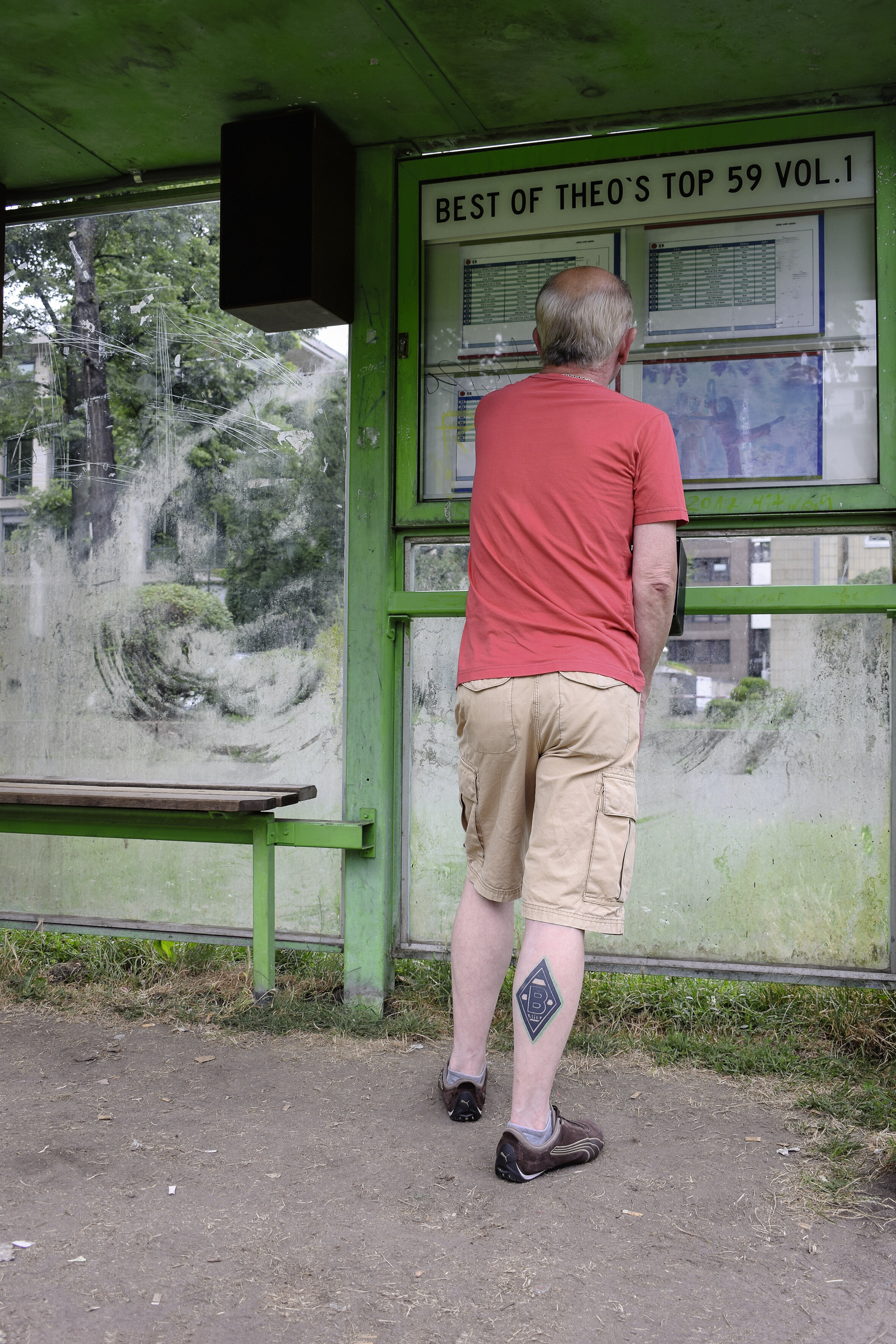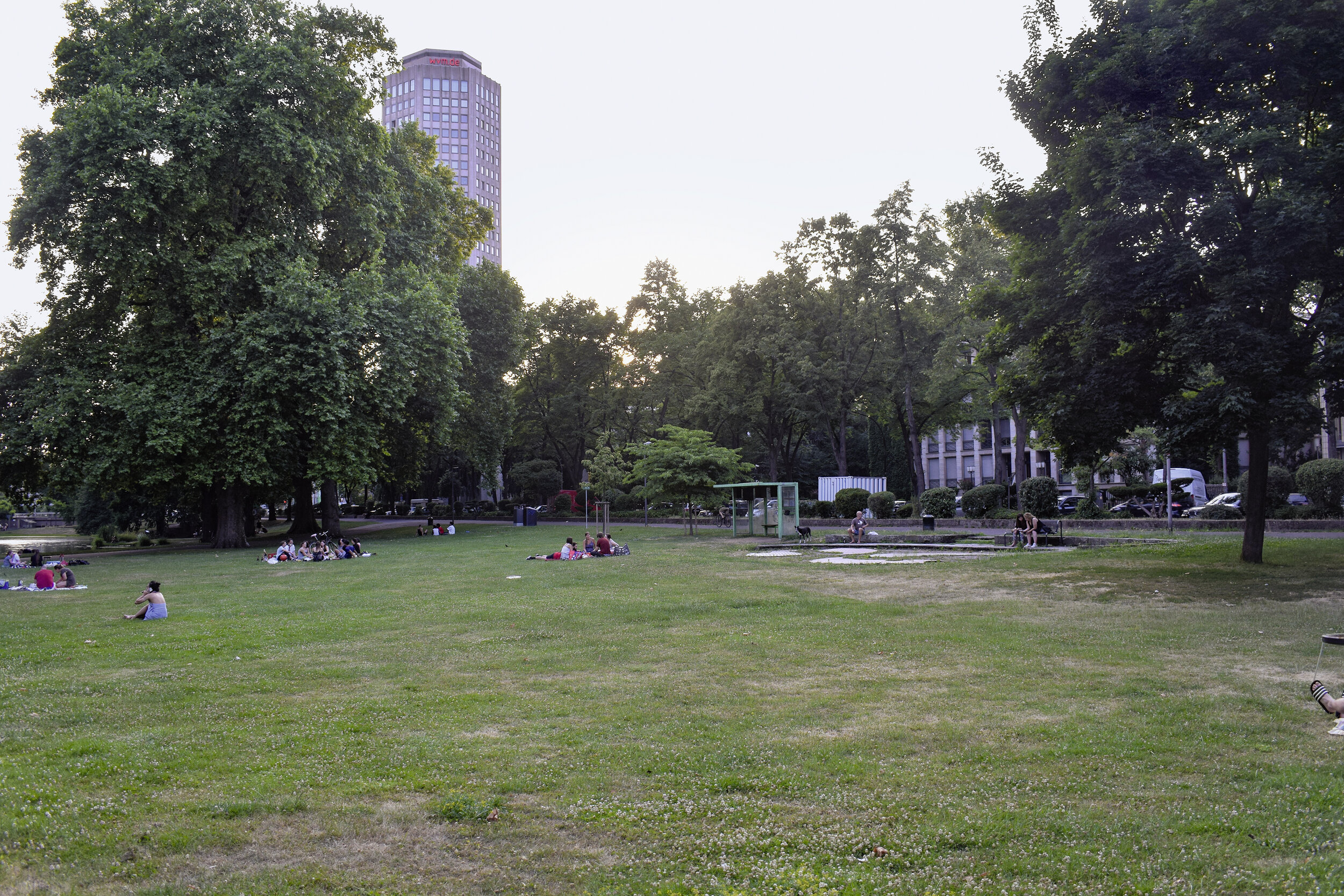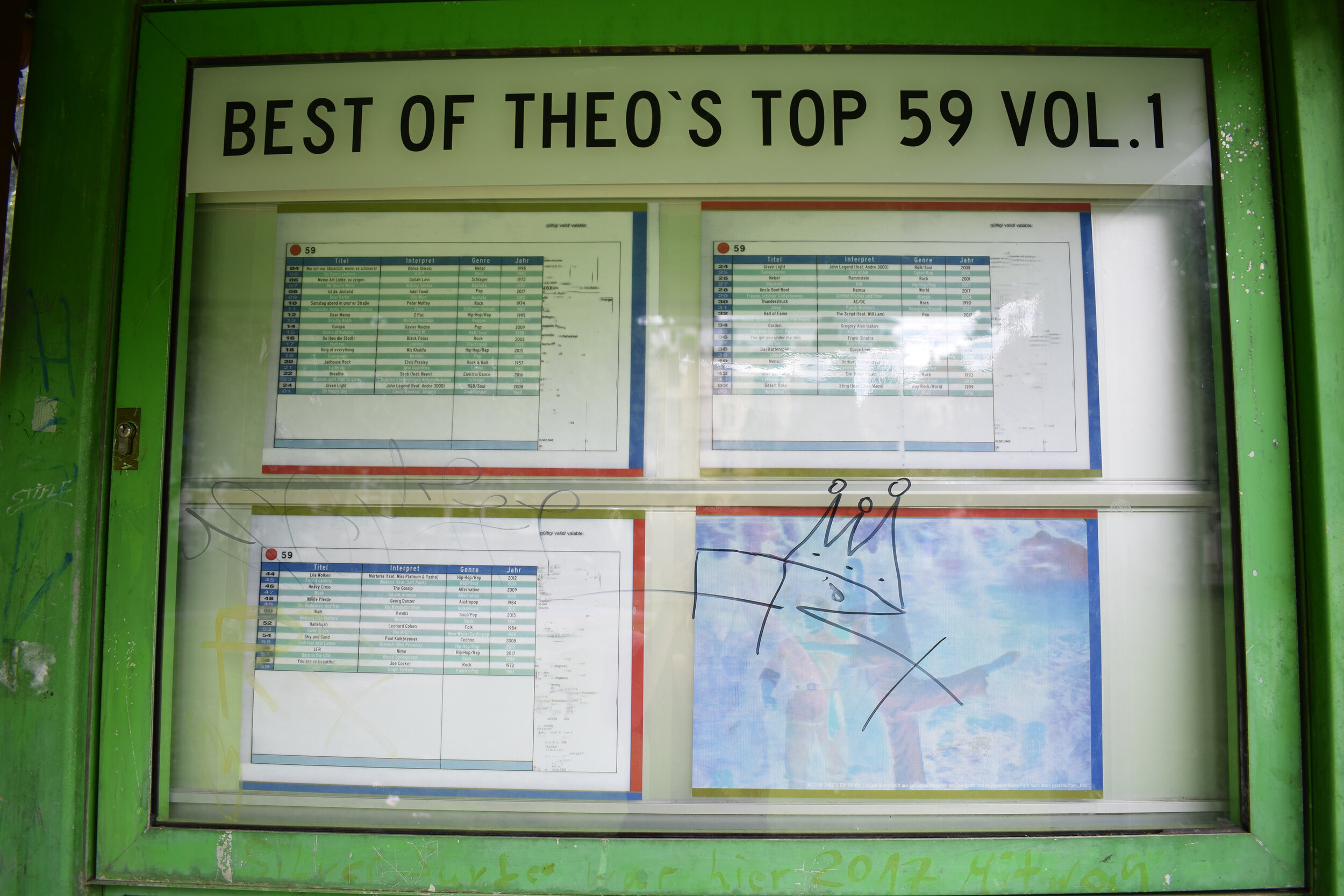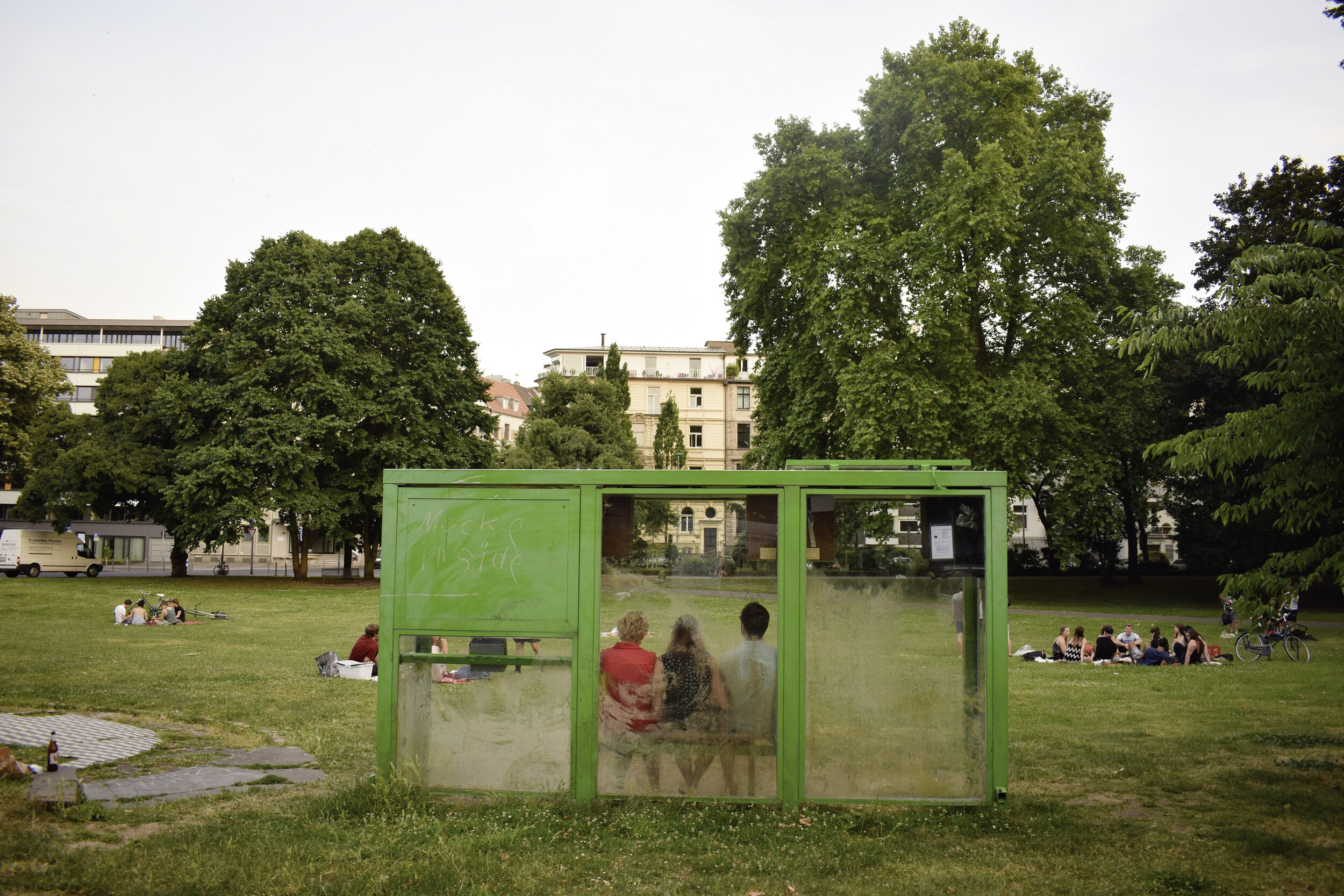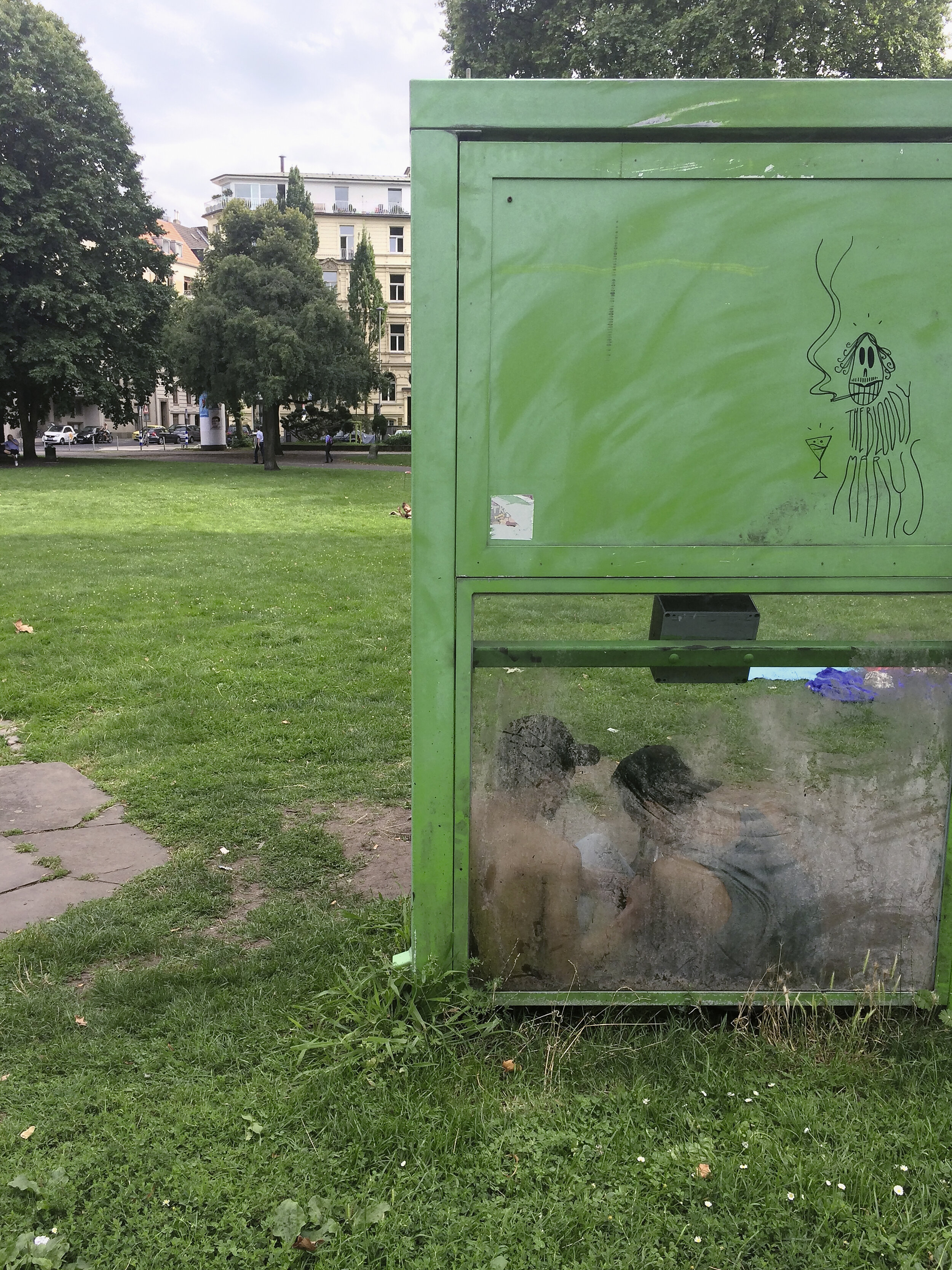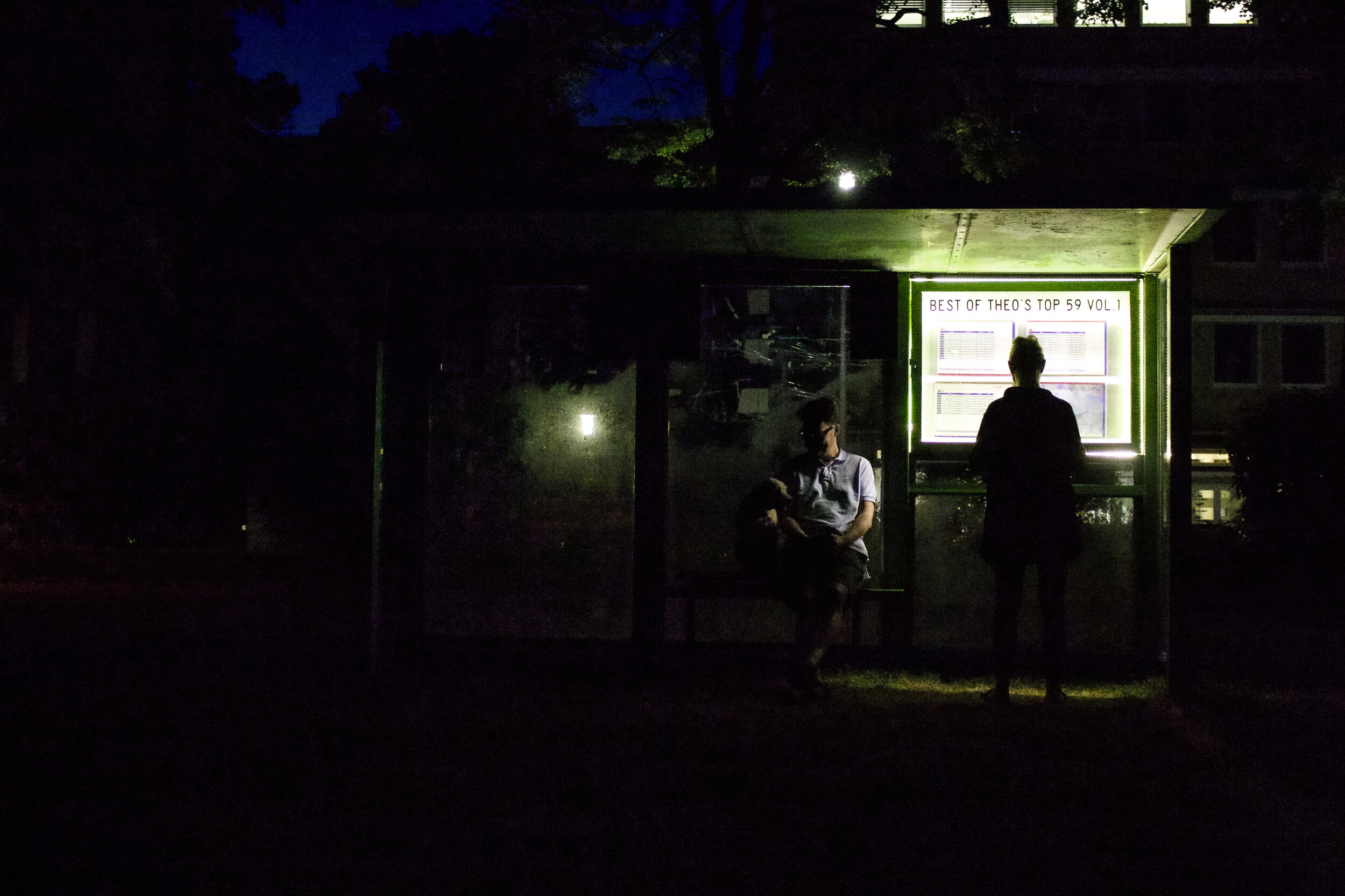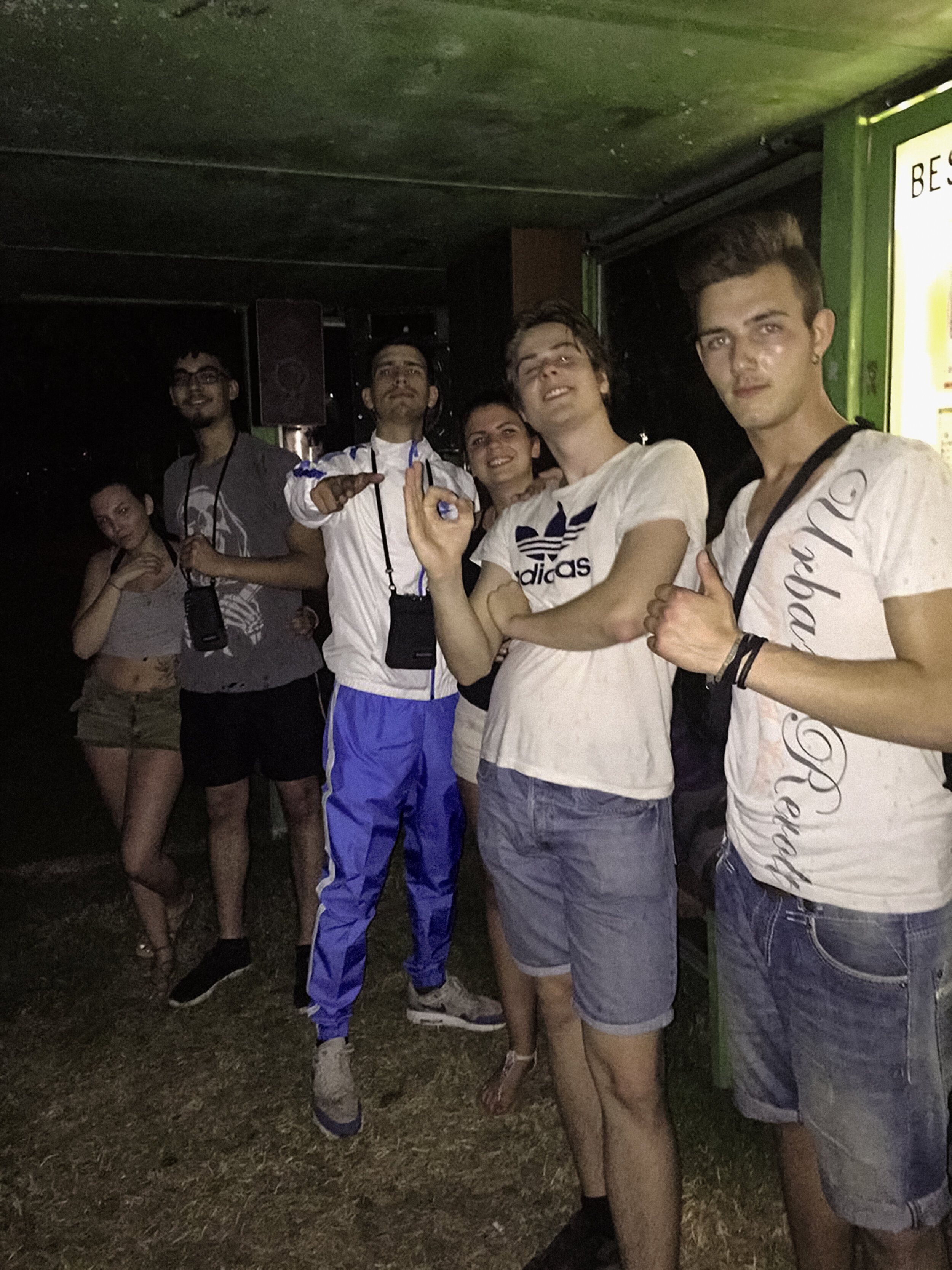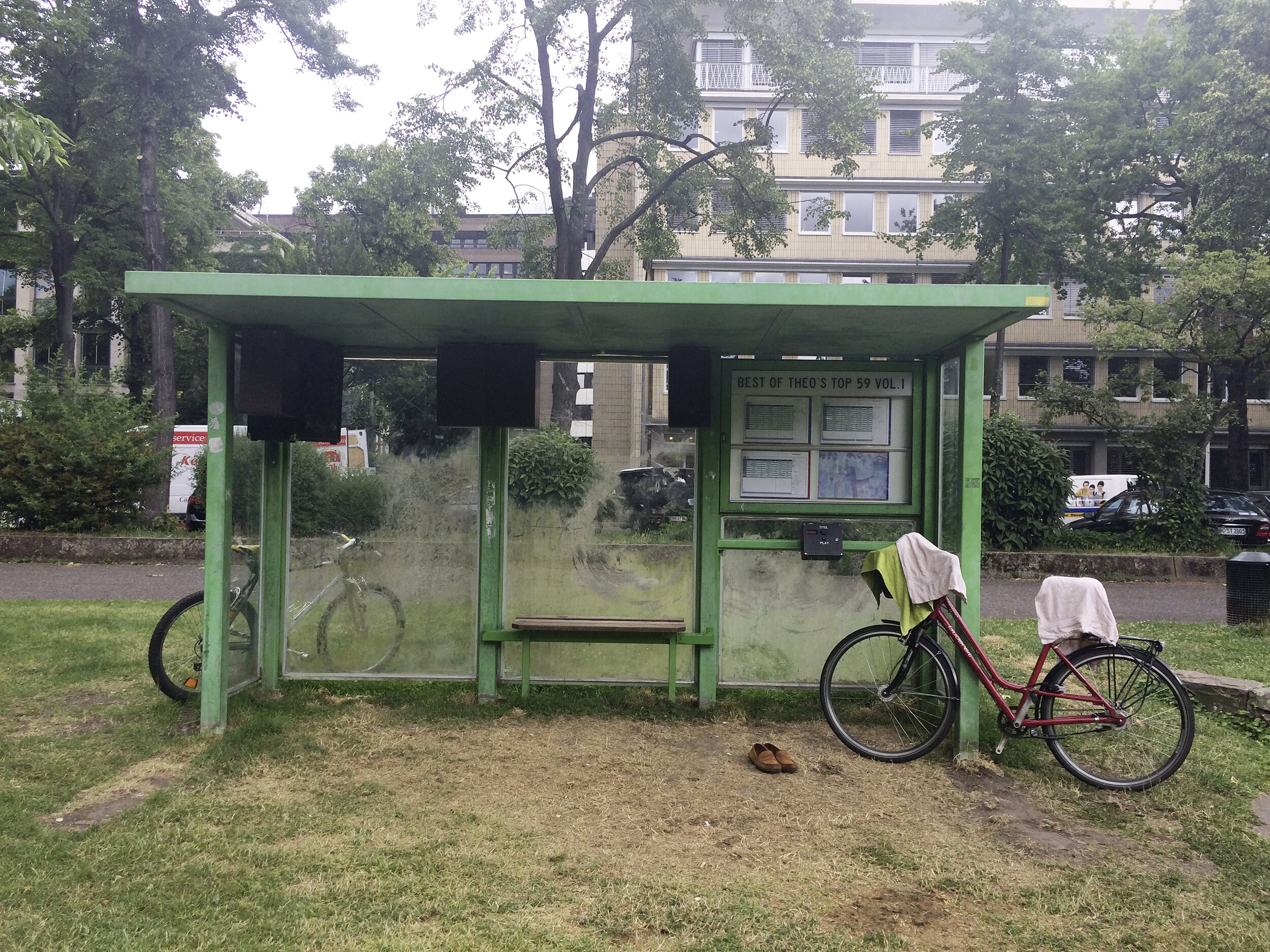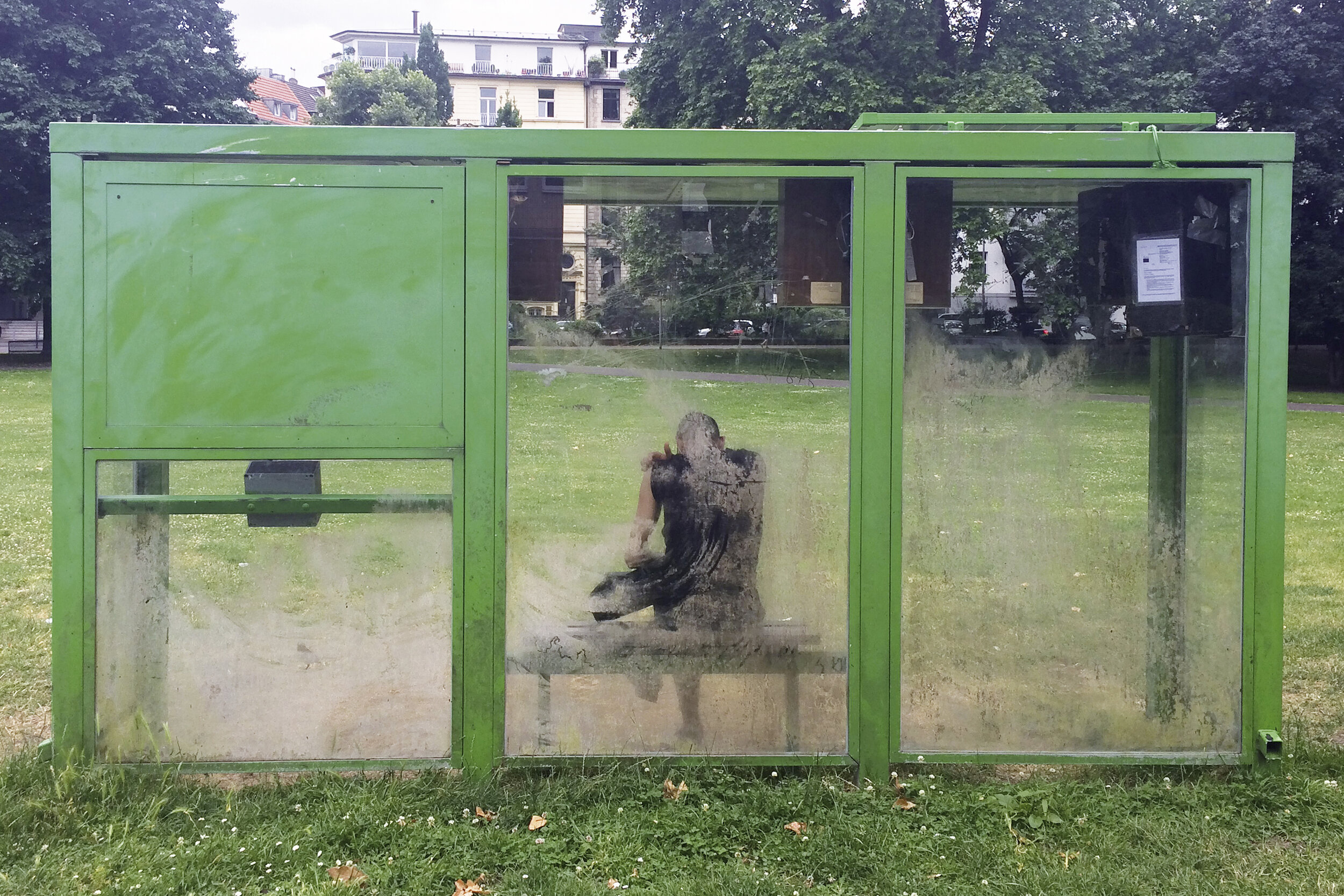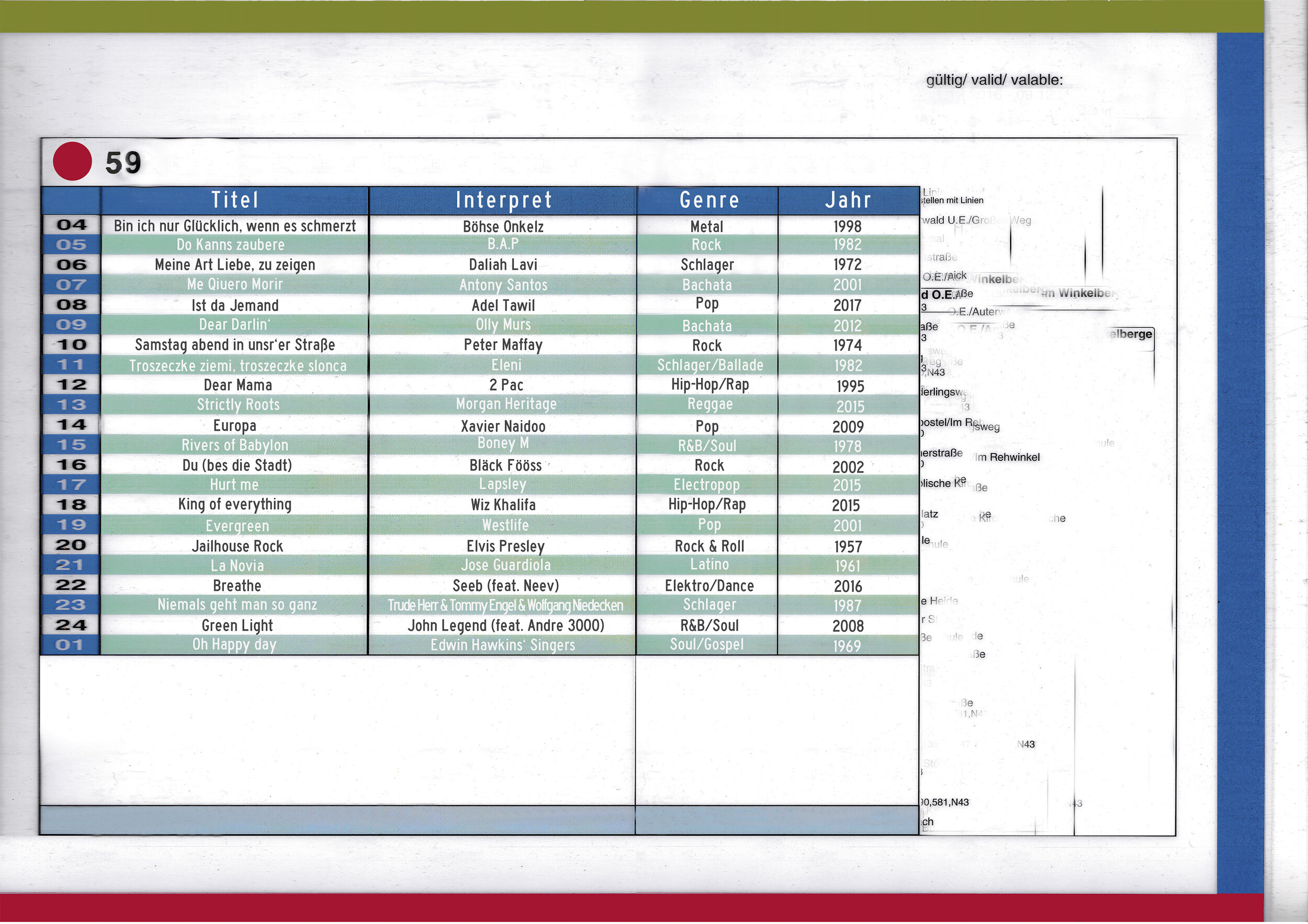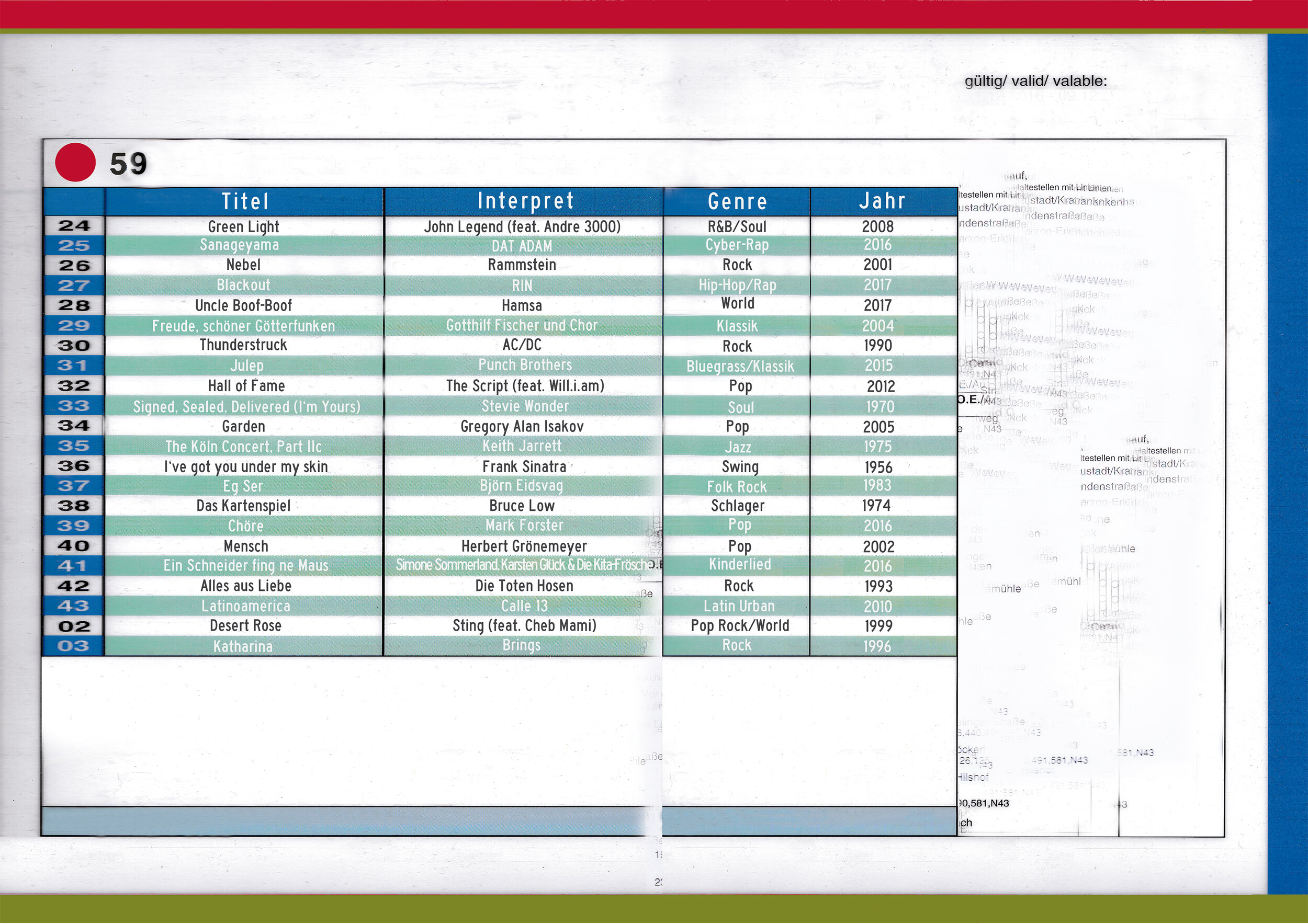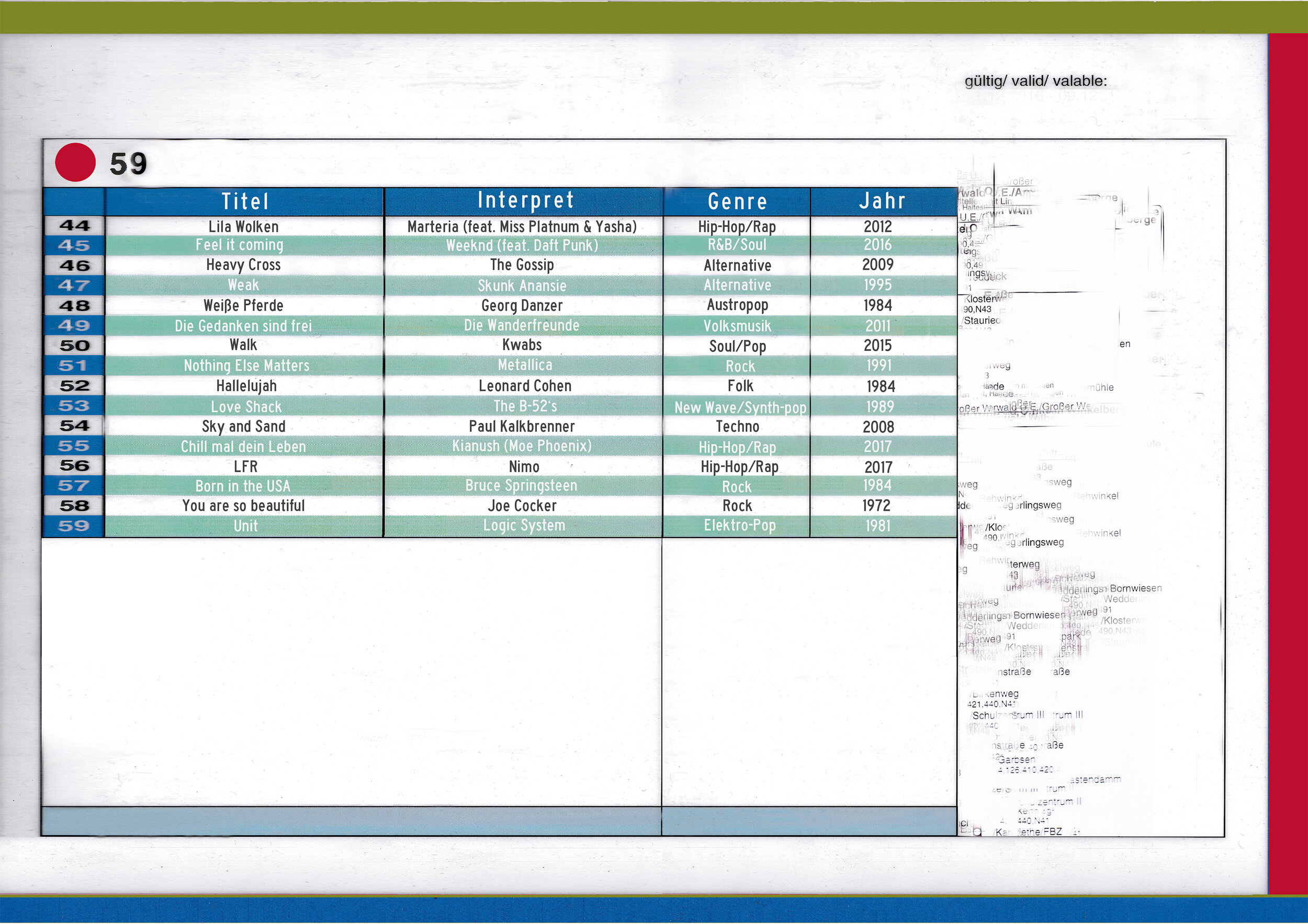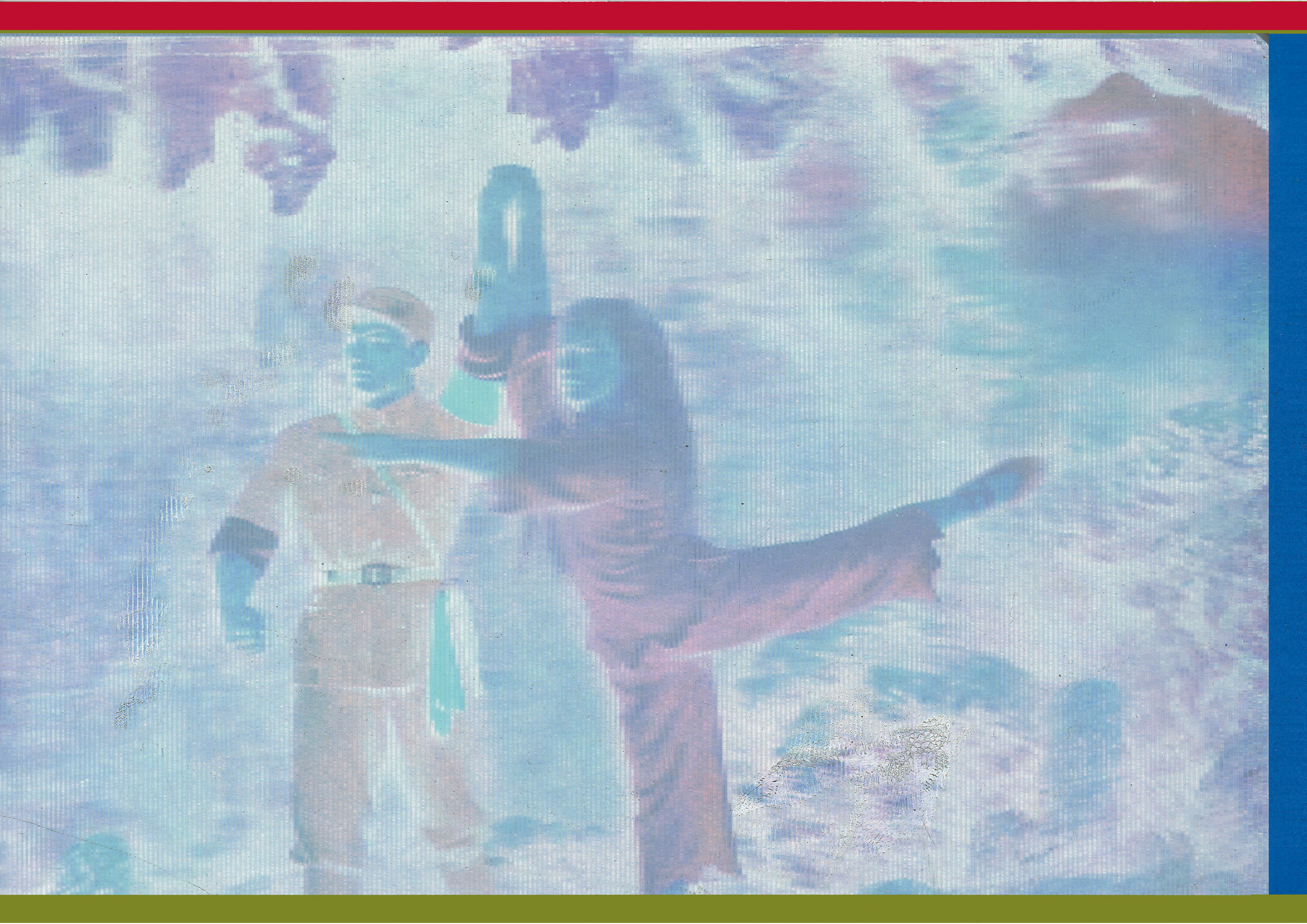BEST OF THEO`S TOP 59 VOL.I, 2017
Bus shelter, loudspeaker, laminated print, sticker, LED, solar collector, battery, 59 mp3 songs, Arduino, music shield, i2c display, circuit board, approx. 420 x 230 x 220 cm/ St.Open #3, co-work with Thomas Garvie
Being transformed into an interactive jukebox, the bus shelter at the Theodor-Heuss-Ring and Ebertplatz in Cologne is both an installation and an active stage. Passing pedestrians can select and play songs from a list by means of a wheel control which shows the track numbers on a lighted display. Because there is no “Skip” function, each song is played to the end. The songs in BEST OF THEO’S TOP 59 VOL. I are a selection of favourite songs from citizens interviewed on the adjacent Ebertplatz and Theodor-Heuss-Park. Music communicates. The work offers a new space in a park that has been haunted by its reputation as a malodorous duck park, occupied by drug dealers, junkies, and street prostitution. Instead, a nexus of reciprocity, dance, and time has evolved.
A tantric masseuse with her IT consultant boyfriend chill at the bus stop and start a conversation with two junkies sitting on the bench. A group of employers from surrounding offices spend their lunch break there. At sunset, a man in a suit dances freely and by himself facing the bus stop to the sound of Metallica’s “Nothing Else Matters”. A group of old and new friends now meet regularly at the bus shelter, coming from near and afar. Park visitors get up from their blankets to choose a new song, again and again. People actively visit and return to the place. Late at night, soaking wet adolescents find a place of pleasure to shelter in a storm, and a homeless person appreciates his new domicile.
The controversial place on Theodor-Heuss-Ring was re-integrated with the installation BEST OF THEO’S TOP 59 VOL. I: it became an attractive place and a meeting point again. People re-appreciated the park, new memories and stories were told between passerbys and visitors.
The Cologne Ebertplatz is a main traffic junction close to the train station. The grounds of the Theodor-Heuss-Park were once an alternative harbour (1813), followed by a lavishly designed park (1881) which was largely destroyed along with the bridges of Cologne (1945) and, in the consequent reconstruction in favour of public transport and traffic since 1970 gave up much of its size.
Photo: Helmut Nick, Selma Gültoprak
